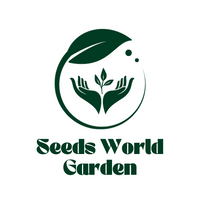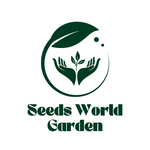Quantity: 35+ Seeds
Color: As picture
Free Shipping and Buy 2 Get 1 Free
Dwarf Cavendish Banana is a popular edible fruit that is widely cultivated and consumed in many parts of the world. It is a short, sturdy plant with a thick, fibrous stem and large, bright green leaves. The fruit is a round to oval shape with a yellow to brownish-yellow color. The flesh is creamy and sweet, with a slightly tart flavor. The banana is also a good source of dietary fiber, vitamins, and minerals.
The Dwarf Cavendish Banana is a type of seedless, sterile, non-fruiting plant. It is grown from corms, which are the underground stems of the plant. The corms are harvested and peeled before being planted in the soil. The plant will then produce a large, dense cluster of banana fruits. The fruits can be harvested when they are ripe, typically about three months after planting.
The Dwarf Cavendish Banana tree is relatively easy to care for and can tolerate a wide range of environmental conditions. It requires full sun, regular watering, and protection from strong winds. The tree is cold hardy and can withstand temperatures down to 28°F. It is also fairly resistant to disease and pests.
The Dwarf Cavendish Banana is a great addition to any garden or landscape. It can be harvested for its edible fruit or used as an ornamental feature. The plant is fast growing and can reach a height of up to 10 feet. It is also a great source of food for wildlife, providing a nutritious snack for birds and small mammals.
Overall, the Dwarf Cavendish Banana is a hardy, low-maintenance plant that produces an abundant crop of delicious, sweet fruit. It is an excellent choice for gardeners of all levels of experience. The plant is also a great source of food for wildlife, making it a great addition to any garden.
How to Grow Your :
1. Soak in water for 24 to 48 hours before you t them. This allows moisture to penetrate the coat and leads to swelling of the ’s parts to spur germination.
2. Find a location with well-drained, organic-rich, sandy or silt loam and with a minimum average temperature of about 60 degrees Fahrenheit during the t’s early growth. The most favorable temperature range is between 75 to 80 degrees. The t should ideally receive six hours of sun per.
3. Till the soil to rid it of weeds and to increase air circulation. Apply compost to the soil after tilling.
4. Place two or three in a hole about ½ to 1 inch deep in the soil along a fence or under a 6-foot-tall trellis form. The holes should be 15 to 23 inches apart and rows 3 to 5 feet apart.You can also start in small plastic pots in a commercial soil mix.
Shipping:
All orders Free Shipping and Buy 2 Get 1 Free. Normally North American delivery time will take 7-14 days (shipping delays due to large orders will add 1-3 weeks depending on time). Other areas please wait 14-28 days for the order to arrive.
RETURN POLICY
We have a 30-day return policy, which means you have 30 days after receiving your item to request a return.


